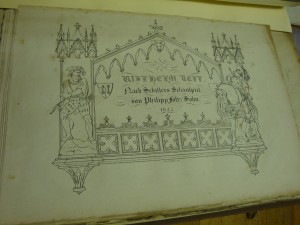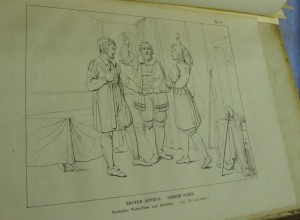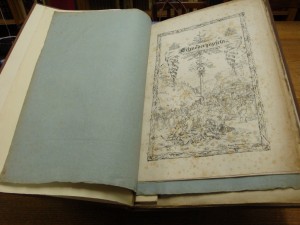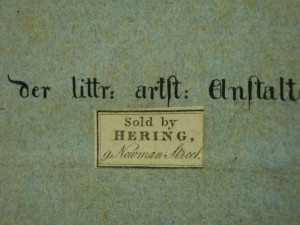The title-page of the Historische Kalender in the previous post is not the only representation of the story of William Tell in Douce’s collection. A series of plates entitled Wilhelm Tell. Nach Schillers Schauspiel and published by Philipp von Foltz (1805-1877) in 1825 can be found bound together with several German booklets of ‘ballads and romances’:
The prints were bound in 1933, when they were already in the Ashmolean. Most of them are dated in the late 1820s and early 1830s; Douce, who died in 1834, probably kept them in their original wrappers, in the hope he would eventually find the time to sort them out. Foltz’s treatment of Schiller’s work combines the legacy of French revolutionary imagery with a touch of ‘local colour’ in the depiction of Swiss traditional costumes and settings:
At the time of producing this series, Foltz was assisting Peter Cornelius with the frescoes of the Glyptothek in Munich. Another of Cornelius’s students at the Akademie der Bildenden Künste, Eugen Napoleon Neureuther (1806-1882), is the author of the lithographs that illustrate the rest of the albums bound in the same volume, like this collection of German popular songs or Schnoderhupfeln:
But Neureuther owes his reputation mainly to the illustrations that he produced for Goethe’s Balladen und Romanzen, published in five booklets between 1829 and 1839. In 1832, The Literary Gazette stated that Neureuther’s ‘curious’ publications ‘need only be seen to excite immediate imitation in this country’:
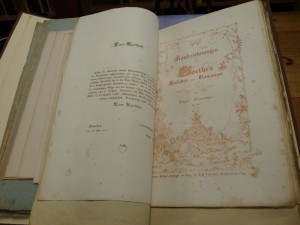
Eugen Neureuther, Randzeichnungen zu Goethes Balladen und Romanzen, 1829, lithograph printed in red (Ashmolean Museum, Oxford)
Douce acquired these albums, which include an edition of Goethe’s Faust ‘in Arabeskenform’, from Hering, the prestigious London-based booksellers and book-dealers of German descent:

